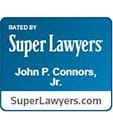As your business makes and sells its products, consumer safety is probably at the top of your priorities. That’s why most products undergo rigorous testing and have warning labels that make clear to consumers that dangers that are associated with the product. Yet, regardless of how careful you are, there’s a good chance that at some point or another you’re going to end up facing a product liability lawsuit.
When that happens, you need to be prepared to aggressively defend yourself. Failing to do so could lead to devastating consequences for you and your business. Your reputation may take a significant hit and your profits may dwindle as a result. The judgment levied against you may be large, too, thereby affecting your bottom line and your ability to keep your employees. All of that isn’t meant to scare you, but instead to motivate you to be proactive in building the defense that you need to protect your interests.
Common product liability defense strategies
Fortunately, you’ve probably got a lot of defense options at your disposal. Let’s take a look at some of them in turn, keeping in mind that this is just a broad overview of a handful of the defense options that may be available to you.
- Misuse: In order to succeed on a products liability claim, a plaintiff has to prove certain legal elements. Amongst them are that the product was defective in some way. In other words, the plaintiff will try to show that your product lacked a certain feature that was necessary to ensure its safe use. However, you might be able to combat this argument if you can show that your product was used for something other than its intended purpose. That way you can demonstrate that the reason it lacked the safety feature in question is because that feature was unnecessary considering that the product was never intended to be used in that way. So, be sure to analyze if the plaintiff was misusing your product when he or she was hurt.
- Assumed risk: Sometimes it’s pretty clear that using a product is risky, even when that product is made as safe as possible. In these circumstances, you might be able to show that the plaintiff knew of the risks associated with the product, he or she took those risks, and therefore it was the assumption of risk that led to injury rather than the product itself.
- Contributory negligence: Similar to assumed risk, here you simply shift the blame to the plaintiff by showing that he or she acted in a negligent manner that played into him or her being injured.
- Intended user: Sometimes products are restricted for use by certain individuals. If that’s the case in your situation, then you might want to look to see if the plaintiff falls outside of those who were intended to use the product. If he or she does, then this defense might be a strong option.
- Modification: All too often consumers substantially change products and are then injured by them. When this happens, you may be able to argue that the modifications that were made to the product rendered it dangerous, rather than the product itself being inherently dangerous. Here, you’ll want to gather as much evidence as you can about what type of change actually took place and how it affected the safety of your product.
Don’t leave your case to chance
There’s a lot at stake in these product liability cases, and they can be complicated matters. With those facts in mind, you really shouldn’t improvise your defense or simply look to quickly settle your case. Instead, you should take a holistic approach to the case at hand to ensure that you’re building the strongest defense possible. Legal teams like ours have extensive experience doing this, so if you’re looking for an advocate, consider researching our firm further.






